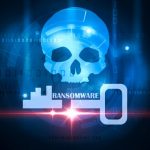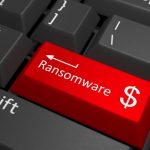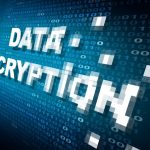The changing face of the enterprise storage market [Q&A]

The growth of cloud usage, increasing volumes of information and a switch towards software defined systems based on commodity hardware have all had an impact on the storage market.
About a year ago we spoke to Mark Lewis, Chairman and CEO of storage specialist Formation Data Systems to get his views on the future of enterprise storage. This week we caught up with Mark again to find out how much the market has changed in just a short time.
Why anti-malware protection isn't a 'thing' you can buy [Q&A]

Threats like ransomware means it’s more important than ever to keep your computers safe both online and off.
Emsisoft has just released Anti Malware 12, the latest version of its respected anti-malware software, and Christian Mairoll, the company’s CEO, took time to speak to me about the ever evolving threat landscape, the best ways to keep your system safe, and the benefits of paid versus free solutions.
How behavioral biometrics can enhance security [Q&A]

Traditional authentication methods are struggling to keep up with the expansion of online services. Yet additional systems like two-factor authentication can prove to be cumbersome.
The answer may lie in analysis of behavioral biometrics which can be used to determine wether credentials are being used legitimately. We spoke to Neil Costigan CEO of Swedish company BehavioSec to find out more about where it’s already being used and how it could change the way we access banking and other services.
How ransomware threatens government agencies [Q&A]

Ransomware is an increasingly severe threat to all organizations and government agencies are not exempt. The Federal Trade Commission recently labeled ransomware as "among the most troubling cyberthreats".
But why are government agencies such an attractive target and what can they do to combat the threat? We spoke to Andrew Hay, chief information security officer of data security specialist DataGravity to find out.
The security risks of migrating legacy applications to the cloud [Q&A]

Enterprise use of the public cloud is taking off in a big way and it's estimated that by 2018, half of the applications running in public cloud environments will be considered mission-critical by the organizations that use them.
But migrating legacy applications to the cloud can lead to new security risks as how the application is used and hosted could differ from the original deployment.
The growing security risks in enterprise Windows environments [Q&A]

ManageEngine recently announced the results of its global Active Directory and Windows Server Security -- Trends and Practices Survey for 2016, which found that 70 percent of IT administrators across the globe agree that their Windows environments are not immune to malicious attacks.
To delve a bit deeper, we spoke to Derek Melber, a technical evangelist for ManageEngine.
What enterprise workloads are right for the cloud? [Q&A]

The question many businesses are asking themselves is, 'should we be moving to the cloud?' The public cloud is clearly a success, as shown by the significant adoption of Amazon Web Services (AWS). Companies are benefiting from the pay-as-go nature of the cloud, as well as from the ability to turn up services as needed without the traditional hardware spend. Gartner recently reported that cloud computing will affect more than $1 trillion in IT spending by 2020.
But even with this growing popularity, corporate IT departments are still struggling with how to integrate public clouds into their data center initiatives. One of the main reasons for this hesitation is the uncertainty around maintaining workload performance once the data gets to the cloud. This is a valid concern, but one that can be overcome. We spoke to Len Rosenthal, chief marketing officer for infrastructure performance specialist Virtual Instruments, to discuss how workload analysis and modeling is the first step for any cloud migration initiative.
Why encryption is essential for everyone [Q&A]

If your laptop or smartphone gets lost or stolen, there’s the danger of its contents being accessed, which could prove a nightmare. If the device is encrypted, however, you can rest easy… Or can you?
Ebba Blitz, CEO of laptop encryption company Alertsec (and former host of Sweden's Shark Tank), chatted with me about the benefits and potential pitfalls of encryption, and revealed her top tips for keeping your data secure.
How HP has changed after the split [Q&A]
Responding to the changing threat landscape facing enterprises [Q&A]

Not so many years ago corporate IT security involved installing a firewall and antivirus solution. But the threat landscape has now become much more complicated and is changing faster than ever.
Companies need to be aware of these changes and make sure their security arrangements can keep up. We spoke to Shai Gabay, the chief innovation officer of security operations and advanced threat detection specialist CYBERBIT, to find out more about the risks and solutions.
The increasing role of AI in cyber security [Q&A]

As attacks become more frequent and sophisticated, conventional security techniques and human analysis struggle to keep pace.
As a result many companies are turning to artificial intelligence methods to help them defend their systems effectively. We spoke to Peter Gyongyosi product manager of security intelligence specialist Balabit to find out more about how AI is increasingly the future of cyber security.
The benefits of a DevOps culture [Q&A]

Many IT teams are looking for a way out of the quagmire of delayed projects, questionable quality, and missed deliveries in which they often find themselves without writing blank cheques. The concept of DevOps has taken the IT world by storm, but has the day-to-day practice caught up?
Brian Dawson, DevOps expert, CloudBees discusses how this new approach can help these IT projects can progress and transform businesses.
Casting a light on shadow IT -- turning threat into opportunity [Q&A]

Today's climate of digital transformation (DX) is giving rise to a variety of intriguing cloud and software-as-a-service based offerings.
In the case of public cloud, instant access to infrastructure and platforms for developing new services off-premise may be extremely attractive to some organizations. The modern world of free cloud services and easily installable apps makes it all too easy for employees to bypass the IT department and use whatever systems they want.
Investigating the DNC hack [Q&A]

Following uncertainty around who was responsible for the compromise of the Democratic National Committee’s (DNC) servers in the US -- which was first blamed on the Russian Government and then claimed by an individual named Guccifer 2.0 -- Fidelis Cybersecurity was approached by personnel handling the investigation for the DNC to undertake an independent investigation in order to provide its perspective on the intrusion.
As part of this investigation, Fidelis analyzed the same malware and data (including file names, file sizes and IP addresses) that were used in the DNC incident. Here are the main findings.
Fighting the threat of social hacking [Q&A]

Often the weakest link in an enterprise’s cyber security is the person behind the endpoint. Although technology solutions can offer a high degree of protection, there’s no substitute for making users aware of the potential threats.
Social engineering attacks are increasingly used to try and catch out employees. Education on cyber security is therefore something that's being taken seriously by businesses of all sizes. We spoke to Scott Youngs, CIO of infrastructure solutions and managed services company Key Information Systems to find out more about the threat and how education can help beat it.
Recent Headlines
Most Commented Stories
© 1998-2025 BetaNews, Inc. All Rights Reserved. About Us - Privacy Policy - Cookie Policy - Sitemap.
